
The neuromarketing research can start. Time to open the brain data floodgates. But how does neuromarketing research work exactly? We’ll walk you through our procedure, step by step.
Step 1 – Target audience
When our study commences, we’ll start with recruiting participants. For a representative sample, we strive for an equal distribution of age, sex, and education. In collaboration with the client other inclusion or exclusion criteria are determined for the participants.
Step 2 – Research location: Living room lab
After the recruitment, the study can start. Participants visit our living room lab at our office in Utrecht. They’re welcomed by the researcher of the day, who will explain the procedure and answers any questions the participant might have about the procedure. To make him feel comfortable, the participant is given a snack and drink. After being made comfortable, the EEG equipment is fit on the participant.
Step 3 – Neuromarketing equipment: ABM B-Alert X10 EEG headset
The EEG data is collected by the ABM B-Alert X10.
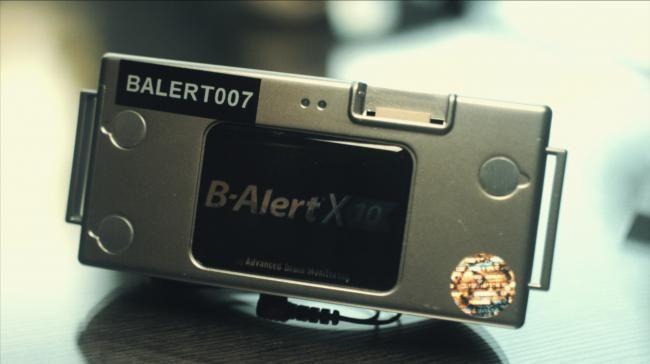
This EEG system with nine sensors registers brain activity with 256 measurements per second. Studies comparing different types of EEG systems show that the EEG by ABM scores highest on comfort for the participant and purity of the signal. It gathers the brain data with a medical precision.
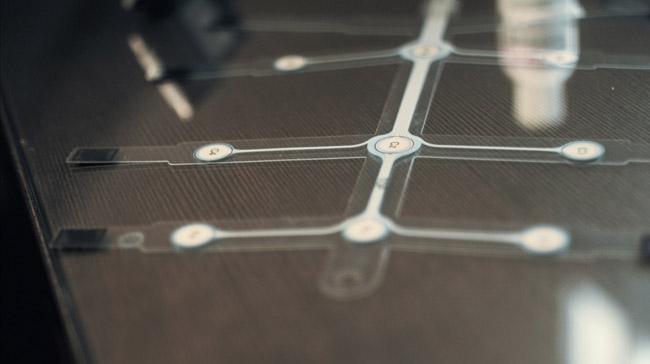
Step 4 – Fitting the EEG
To measure brain data in a valid manner, it is crucial that the headset has a good fit on the participant’s head. The nine sensors should be positioned on the correct regions of the head. We first measure the horizontal and vertical circumference of the head. Based on its size, the researcher chooses the best fitting sensor strip and headband. By doing this, the participant won’t notice the equipment on his head during the study.
Additionally, two reference sensors are placed behind the participant’s ears. These purify the signal from the brain of any noise that may be caused in other areas of the body. To achieve the highest possible skin conductance, the skin behind the ears is cleansed with alcohol. These electrodes will register all electrical activity that doesn’t stern from the brain. Consequently, we’ll be able to isolate the actual brain data.
To acquire the best signal, the nine sensors of the headset are surrounded with a foam disk, which is filled with synapse gel.
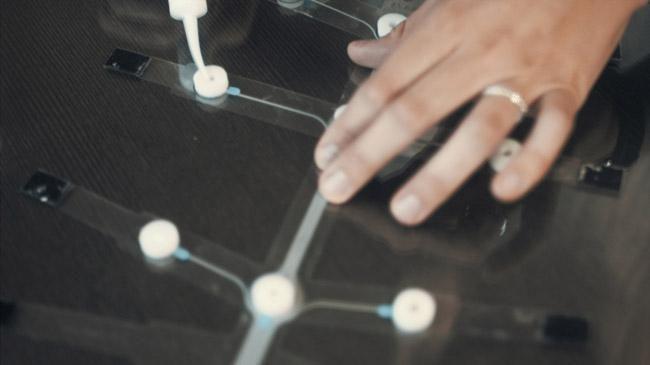
The headset is placed on the participant’s head with required precision. This is where the wheat gets separated from the chaff: Only the best researchers are able to place the nine sensors correctly at the first try. Using an impedance check, it is determined whether all sensors can receive a proper, pure signal.
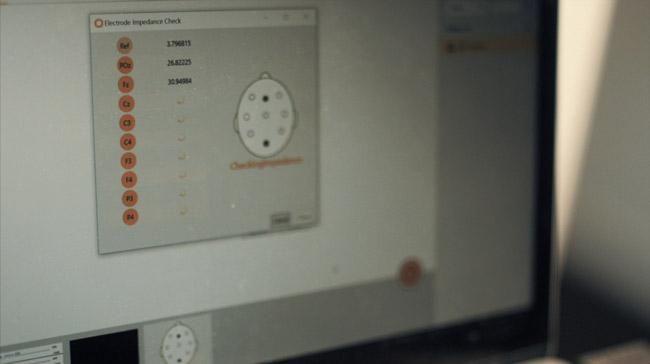
The impedances of the sensors are measured separately. If necessary, they are corrected by adjusting the headset or by filling the sensor with extra synapse gel.
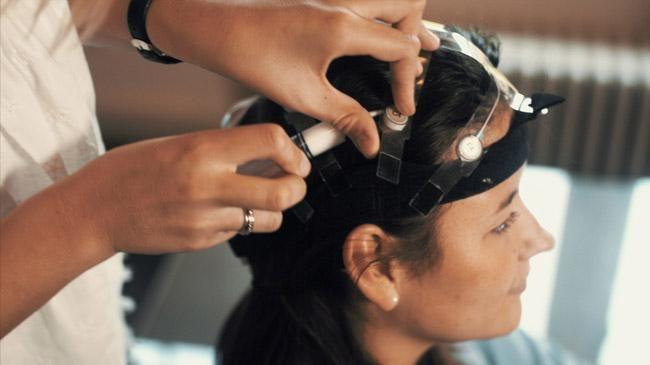
Next, the benchmark procedure starts, which assesses the brain activity of the participant while he is at rest. By doing this, we can normalize the brain activity on an individual level, giving us a great advantage over using standard metrics.
Step 5 – Installing the Eye Tracker: Tobii X3-120
After completing the installment of the EEG headset, the Eye Tracker is installed. After all, we want to know what the participant is looking at. When the research takes place online, on a computer, the remote Eye Tracker is used. The participant does not have to wear glasses or any type of equipment on him. By doing so, we’re able to create the most natural experience for the participant. The Tobii X3-120 offers ultra-accurate measurements of eye movements, pupil dilation, and distance to the screen.
Before the actual study starts, the Eye Trackers is calibrated by a simple viewing task the participant carries out. The whole preparation – briefing, EEG, and Eye Tracking – takes about 30 minutes.
Start With Eye Tracking
Contact us now!
Step 6 – The Study may start
Finally, the participant can start the study. The final instructions are given and, to prevent the participant from being distracted, the researcher leaves the living room lab until the participant has finished the study. The more realistic the setting, the more usable the insights.
After completing the study, the EEG headset and reference sensors are removed. Before leaving the living room lab, the participant is cleaned from the last bits of synapse gel. Looking sharp again!
Step 7 – The analysis
After collecting the data of at least six participants, the analysis may start. To analyze the brain data, we make use of four different metrics: Desire, attention, confusion, and workload (Read more about in our blog: Which EEG-metrics do we use when analyzing brain activity in neuromarketing research?).
These four metrics are used for the quantitative analysis, comparing the data to a benchmark. The data of the participants is merged, so we’re able to check what processes take place in the consumer’s mind per second.
For our qualitative analysis, we’ll zoom in on how participants react to specific elements of a commercial, store or website (Read more about in our blog: Data-analysis of EEG in Neuromarketing Research).
After completing the analysis, the conclusions and recommendations are processed in a clear research report.
Would you like to visit our living room lab in Utrecht? Or would you like to participate in one of our studies? We’d like to welcome you at our office in Utrecht!






